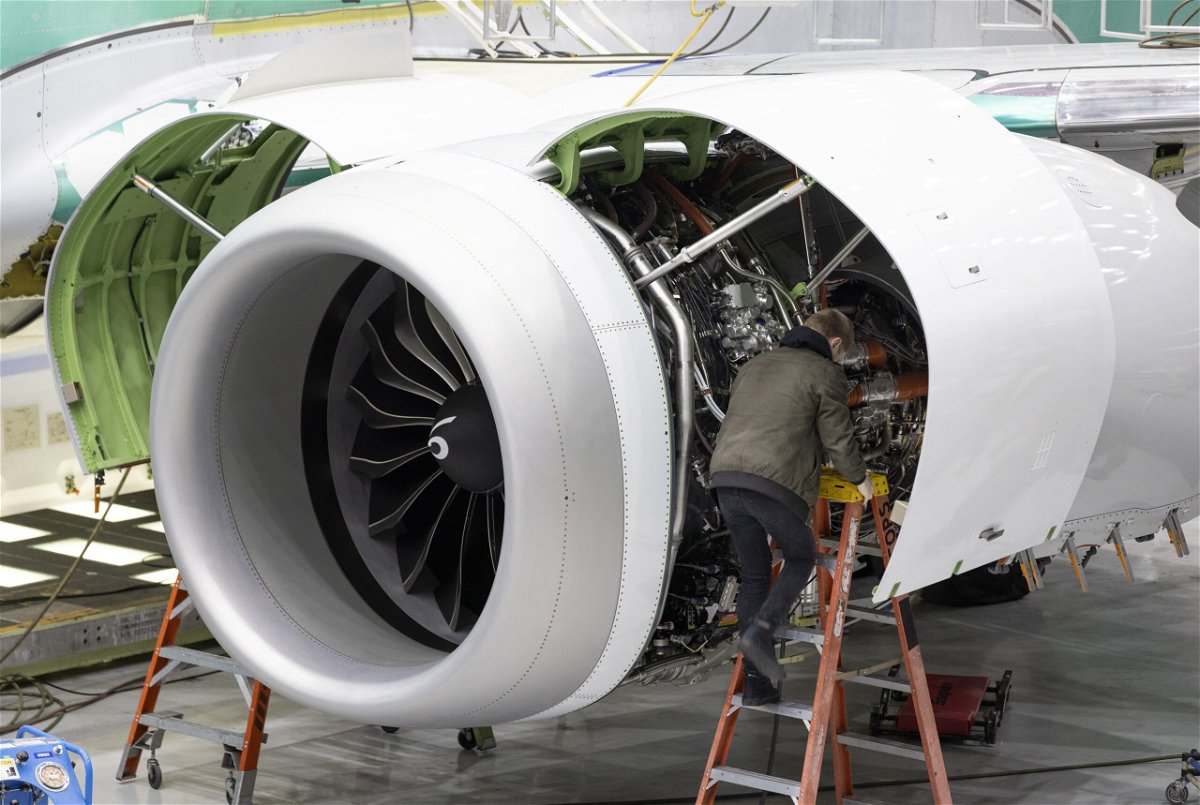By Gregory Wallace and Chris Isidore, CNN
Washington DC (CNN) — The Federal Aviation Administration has flagged more safety issues for two troubled families of Boeing planes, the latest in a series of issues at the embattled aircraft maker.
The issues involve engine anti-ice systems on the 737 Max and larger 787 Dreamliner. While the FAA flagged the issues in a filing in mid-February, it drew greater attention on Friday because of a Seattle Times article.
The safety regulator continues to allow both models of the plane to fly despite the potential problems. Both issues are moving through the FAA’s standard process for developing airworthiness directives — rather than an emergency process — signaling that the agency and plane maker do not believe the issues are serious enough to require the planes to stop flying immediately.
But another safety issue is the last thing that Boeing needs at this moment, two months after a door plug on a 737 Max blew out on an Alaska Air flight, leaving a gaping hole in the side of the jet shortly after take-off. The Max has had a series of problems over the last five years, including two fatal crashes that between them killed 346 people in late 2018 and early 2019, which led to a 20-month grounding of the jet.
The importance of de-icing
While it might seem as if de-icing equipment is less important in summer months, the cold temperatures at high altitudes at which commercial jets fly, combined with the amount of moisture in clouds that they must fly through, make the de-icing equipment necessary twelve months a year.
“You’re not protected by Mother Nature’s seasons,” said Dennis Tajer, an American Airlines pilot and a spokesman for the Allied Pilots Association. “Airworthiness directives aren’t issued unless you have an unsafe condition that need to be addressed. It’s ominous. It may be manageable on a temporary basis. But it’s not a solution.”
The FAA said the newly disclosed Max issue could cause the jet’s engines to stop working. An electrical issue “could result in loss of thrust on both engines due to damage from operation in icing conditions.” The fix includes replacing wiring in a panel above the pilots’ heads.
The issue was discovered during a Boeing engineering analysis three years ago and is “a remote concern that has never been seen during decades of service” in both the current and previous generations of 737, said Jessica Kowal, a Boeing spokeswoman. The company said it disclosed the issue to airlines and the FAA at the time, and provided a fix.
The 2021 discovery lines up with the company’s order that year to ground some Max planes because of a different electrical problem. The Boeing Max — at the time, only recently back in service after the nearly two-year grounding prompted by two fatal crashes — underwent an extensive electrical system analysis.
A different issue with the Dreamliner
Less than a week after publicly publishing the 737 Max notice, the FAA reported a separate anti-icing issue with the 787 Dreamliner. It said a damaged seal could cause heat damage to an engine inlet — and risk serious damage to the plane.
In 2018, an outer covering of an engine cowling that broke loose on an earlier version of a 737 jet shattered a window on a Southwest Airlines flight. The passenger sitting next to that window, Jennifer Riordan, 43, was expelled through the broken window. While other passengers were able to bring her back inside, she died as a result of blunt impact trauma of the head, neck and torso.
Boeing is working on redesigning the part on the 787 Dreamliner engine to prevent further issues, Kowal said. The issue was discovered on fewer than two dozen of over 1,000 Dreamliners in service, she said.
The FAA described neither issue as a production quality problem — which is its current focus at Boeing following the January in-flight blowout.
The FAA orders have not yet taken effect, but said they would apply to about 315 planes, including both Maxes and Dreamliners.
Series of safety and quality questions
Boeing drew criticism from lawmakers after the January 737 Max mid-flight blowout for having asked the FAA to certify new models of the 737 Max despite a different flaw in the anti-ice system. The company ultimately withdrew that request, which will delay its plans to deliver the new planes to its airline customers.
But it continues to build existing models of the jet with the same engine de-icing flaw that is delaying certification of the next Max versions.
In addition to the de-icing equipment issue, Boeing has been stung by numerous questions about the quality and safety procedures at its factories.
The National Transportation Safety Board is looking into the causes of the incident and already found that four bolts needed to hold the door plug in place were missing when the plane left a Boeing factory in October.
The FAA is also demanding that Boeing come up with a plan to improve its quality controls for its aircraft manufacturing.
And the Justice Department is investigating whether the incident is a violation of a settlement it reached in 2021 to defer prosecution on charges that it defrauded the FAA during the original certification of the 737 Max before two fatal crashes resulted in a 20-month grounding of the plane.
The NTSB has yet to determine blame or fault for the door plug incident on the Alaska Air flight. That will come later in its investigation, perhaps a year or more from now. But Boeing CEO Dave Calhoun told investors in January, “We caused the problem, and we understand that. Whatever conclusions are reached, Boeing is accountable for what happened.”
The-CNN-Wire
™ & © 2024 Cable News Network, Inc., a Warner Bros. Discovery Company. All rights reserved.

